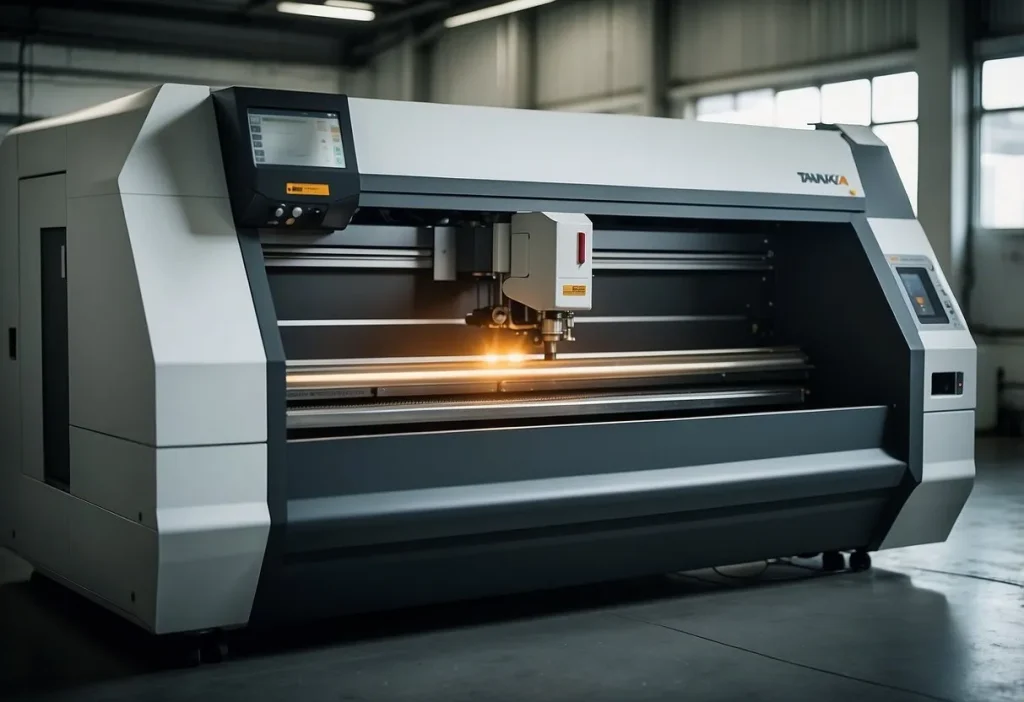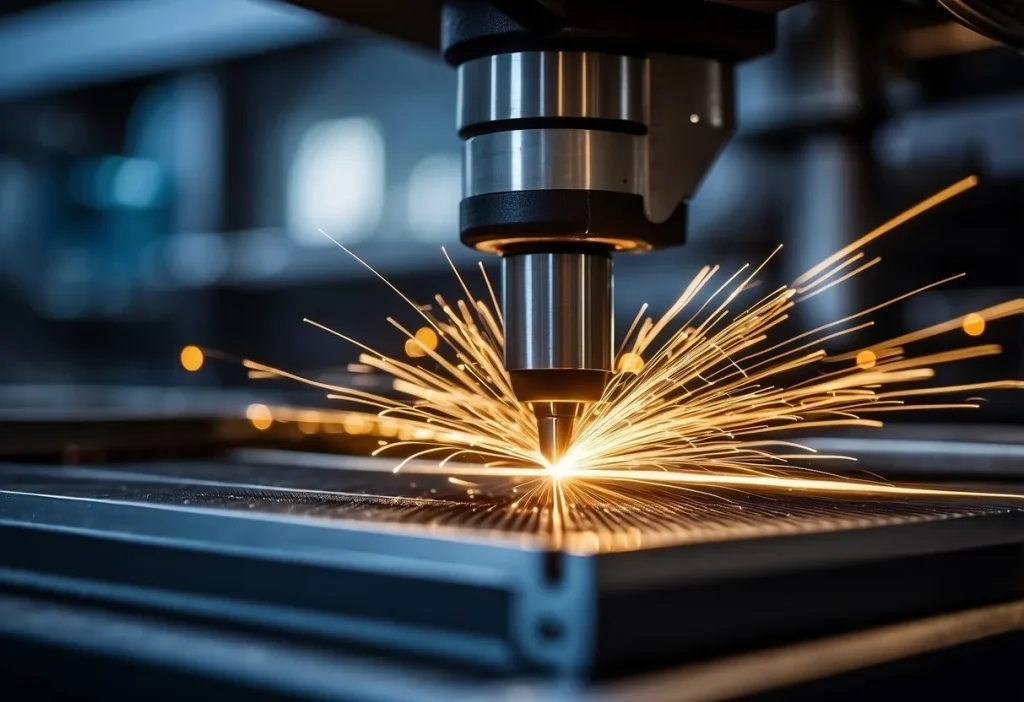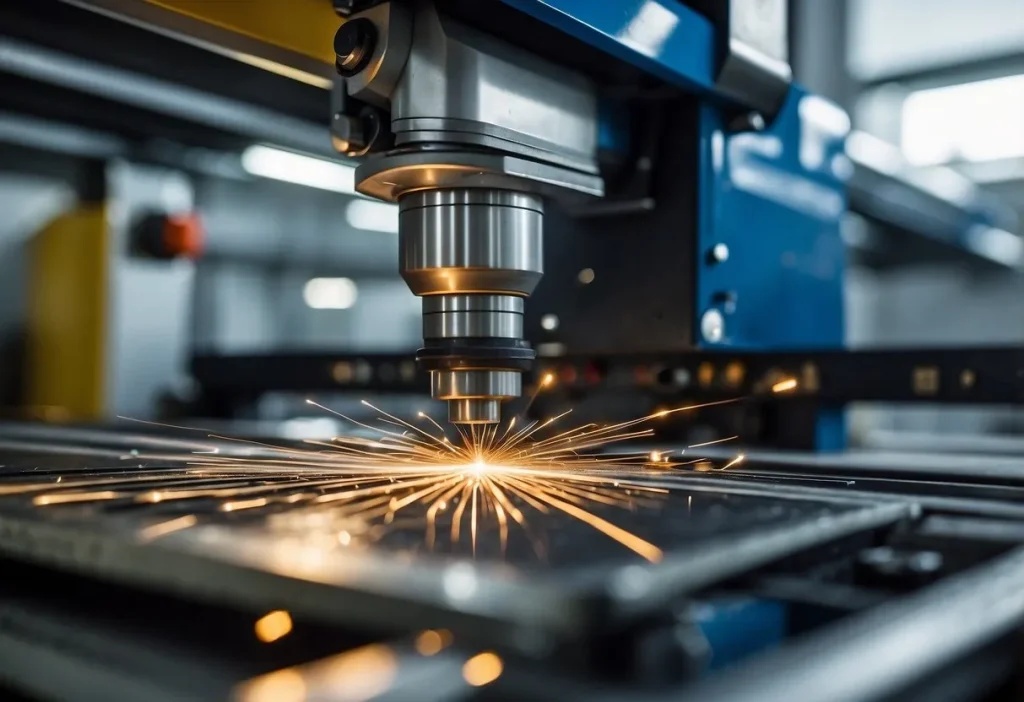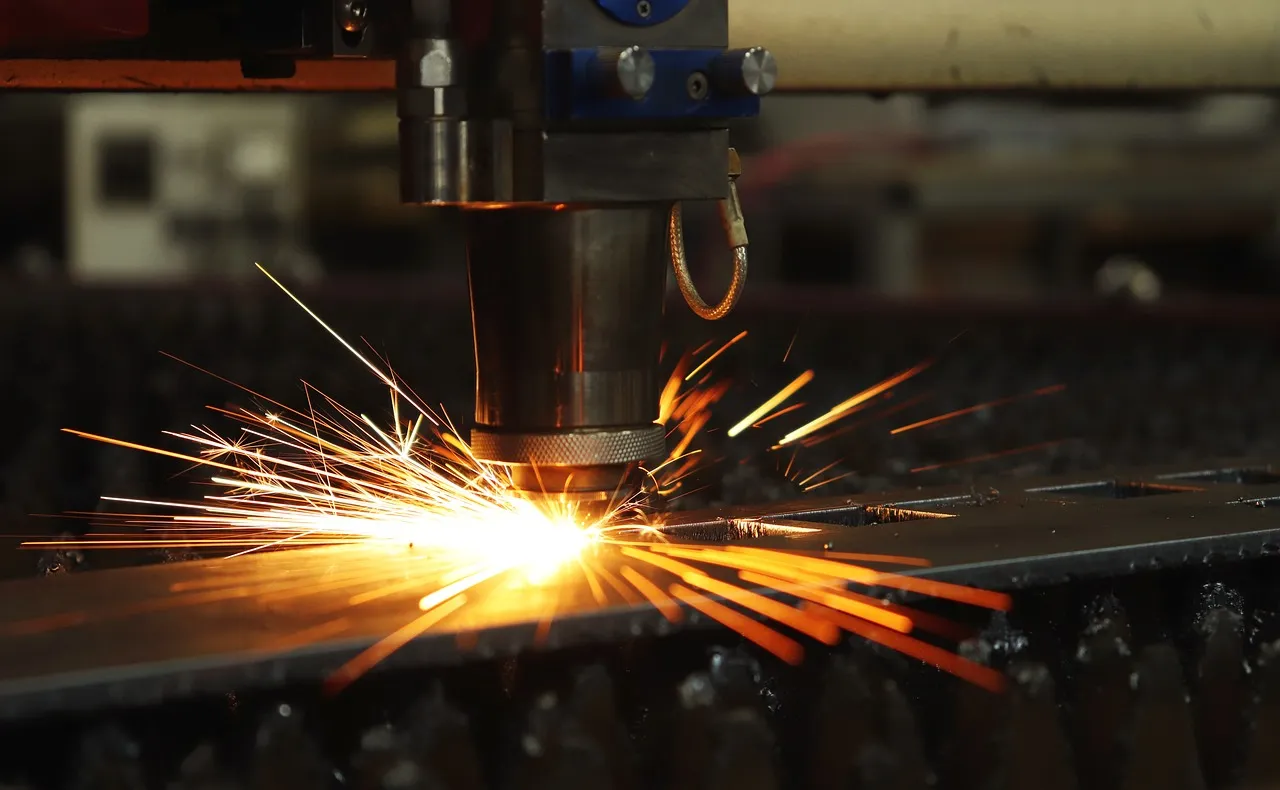
Tanaka Laser Cutting Technology is known for its precision and efficiency. We will discuss the basic principles of laser cutting and highlight advanced applications.
Principles of Laser Cutting
Laser cutting involves using a high-powered laser beam to melt, burn, or vaporize material. Tanaka’s lasers offer precise cuts due to their advanced optics and control systems. They focus on minimizing material waste by optimizing the cutting path and reducing kerf width.
The laser’s intensity can be adjusted for different materials, making it versatile. Reflective and non-reflective materials can be cut with equal ease. In our machines, the laser beam’s focus is fine-tuned for accuracy, ensuring clean edges with minimal warping or heat damage. This technology increases efficiency and reduces errors.
Advanced Tanaka Laser Applications
Our laser technology is not just limited to cutting simple shapes. We use it in areas such as intricate designs, microfabrication, and customized parts.
For instance, in electronics, Tanaka lasers can cut and etch printed circuit boards (PCBs) with high precision. This improves the quality and longevity of electronics. Another application is in automotive sectors, where lasers are used to cut complex parts that need exact specifications.
Additionally, the flexibility of our systems allows for rapid prototyping, enabling quicker development cycles. The advanced control systems in Tanaka machines ensure that even the most detailed projects are completed accurately.
Environmental Benefits of Reduced Material Waste

The Tanaka laser cutting machine offers a range of environmental benefits due to its ability to minimize material waste. By focusing on energy efficiency, reducing carbon footprints with precision cutting, and promoting sustainability through resource efficiency, we can achieve significant environmental gains.
Energy Efficiency in Laser Cutting
Energy efficiency is a major advantage of reducing material waste. The Tanaka laser cutting machine uses advanced technology to cut materials precisely, which lowers the energy needed for each cut.
This reduces the overall energy consumption. Using less power means fewer fossil fuels are burned, leading to lower emissions and a smaller environmental impact.
Minimizing Carbon Footprint With Precision Cutting
Precision cutting helps in minimizing the carbon footprint. When we reduce material wastage, there is a direct reduction in the amount of waste that needs to be managed, transported, or recycled.
Fewer trips to dispose of waste result in less fuel consumption and, thus, lower carbon emissions. High accuracy in cutting also means we use exactly what is needed, further decreasing emissions.
Sustainability Through Resource Efficiency
Resource efficiency is key to sustainability. By cutting materials precisely, we maximize the use of raw materials, leaving minimal waste.
Efficient use of resources means less strain on natural reserves. It also reduces the need for new materials, helping maintain ecological balance. Reduced waste contributes to a sustainable production cycle.
Lists and tables help summarize these benefits clearly:

Using the Tanaka laser cutting machine, we create a more sustainable and energy-efficient process, resulting in a significant positive environmental impact.
Material Utilization in Manufacturing

Effective material utilization is essential in manufacturing to reduce waste and cut costs. By focusing on eco-friendly materials, optimizing raw material use, and recycling metal offcuts, we can achieve significant improvements.
Eco-Friendly Materials in Laser Cuttin
We use eco-friendly materials such as recyclable metals. These materials help us minimize environmental impact. Laser cutting is precise, reducing material waste.
Eco-friendly materials often have the same quality as traditional ones. They can be cut and welded easily. This approach not only supports sustainability but also ensures production quality remains high.
Optimizing Raw Material Usage
Optimizing raw material usage is vital for cost-efficiency. With advanced software, we can plan cuts to maximize material use. This process includes careful layout planning.
Using less material saves money. It also reduces the need for additional resources. Proper scheduling and planning also ensure minimal waste during production. Quality control systems help maintain high standards.
Recycling and Reusing Metal Offcuts
Recycling metal offcuts is another key practice. Instead of discarding leftovers, we recycle them. This method helps reduce costs and supports sustainability.
We can reuse offcuts in additive manufacturing. By melting and reshaping these pieces, we create new items. This practice benefits both the environment and our bottom line.
Recycling ensures that we make the most of every piece of raw material, adding value to our manufacturing process.
Operational Efficiency and Quality Assurance
Efficient operations and robust quality assurance are key for the Tanaka Laser Cutting Machine. This ensures minimal material waste, high precision, and safety during use.
Enhancing Quality with Laser Precision
The laser precision in the Tanaka machine allows for tight tolerances. This accuracy reduces material waste. We can cut complex shapes without errors.
Quality control is vital. Each cut is checked against standards. Our system ensures uniformity in every cut, saving both time and resources.
Service and Maintenance for Consistent Performance
Regular service keeps the Tanaka machine running smoothly. Maintenance reduces energy consumption and prolongs machine life. We perform checks on all components.
Proper care ensures consistent quality. Downtime is minimized, leading to more efficient operations.
Importance of Laser Safety Measures
Safety measures protect the operators and the machine. Laser safety systems are built-in. We use protective gear and follow safety protocols.
Strict adherence to safety minimizes the risk of accidents. Regular training for operators ensures safe handling of the machine.




